Media Landscape Guide
- 08/12/2015

The Media Landscape Guide is a comprehensive and detailed information on the media and telecommunications landscape in Bangladesh. It will serve as a useful preparedness tool and secondary data source during disaster response to communicate with disaster affected community through media.
Originally developed by the infoasaid project, the Media and Telecommunication Landscape Gudies (MLGs for short) are online guides that provide comprehensive and detailed information on the media and telecommunications landscape in a variety of countries. They were produced between 2010 and 2012.
The Guides can serve as a useful preparedness tool. In the immediate aftermath of an emergency, an information needs and access assessment needs to be undertaken in order to verify whether the channels of communication outlined in the Guides are still functioning.
Each country guide provides information on the following:
- Profiles of the main radio stations, TV channels, newspapers and news websites
- The most popular and trusted sources of news and information
- Media outlets that command significant national, regional, ethnic and religious audiences
- Media outlets which have strong influence on opinion formation in the ruling elite
- Contact details for each media outlet
- Radio stations and TV channel listings in the country
- Peak audience periods for radio and television
- Languages to use in both local and national broadcasts
- A brief summary of the more traditional forms of communication such as theatre, music, dance, and through respected channels such as religious or community leaders
- Mobile phone ownership and mobile network coverage
- Mobile phone usage by the local population and profiles of the main telecommunications companies in each country
- Specialist services that mobile network operators may offer, such as mobile money transfer and agricultural information for farmers in the form of SMS and voice messages
- Media resources including media service providers that aid agencies may need to engage with in order to produce radio programmes, print posters or create videos
- Information about more traditional forms of communication such as religious institutions or community networks
The views expressed in these documents do not reflect those of either the CDAC Network, BBC Media Action or Internews. They reflect the views of the infoasaid project team.
About Shongjog
The Shongjog Multi-stakeholder Platform (MSP) is a collaborative effort made up of government, international and national NGOs and other groups. The MSP on Communication with Communities (CwC) will aim to ensure that there are identified credible sources of information, where information is managed and updated. The Shongjog MSP will also aim to promote trust between communities and the disaster response sector by recognizing voices of the community and reflecting them in strategies, policies and decision-making processes.
News From CDAC Network
REGISTER: Communication and Aid in the Digital Age
What does Communication is Aid look like when the affected population is not a communications monolith? The CDAC workshop at the WSIS Forum will brings together some of the world’s brightest thought-...
Resources for those responding to COVID-19
CDAC is committed to bringing those working in humanitarian settings, the very latest guidance, messaging, advice and resources. Here's the latest: updated daily...




















